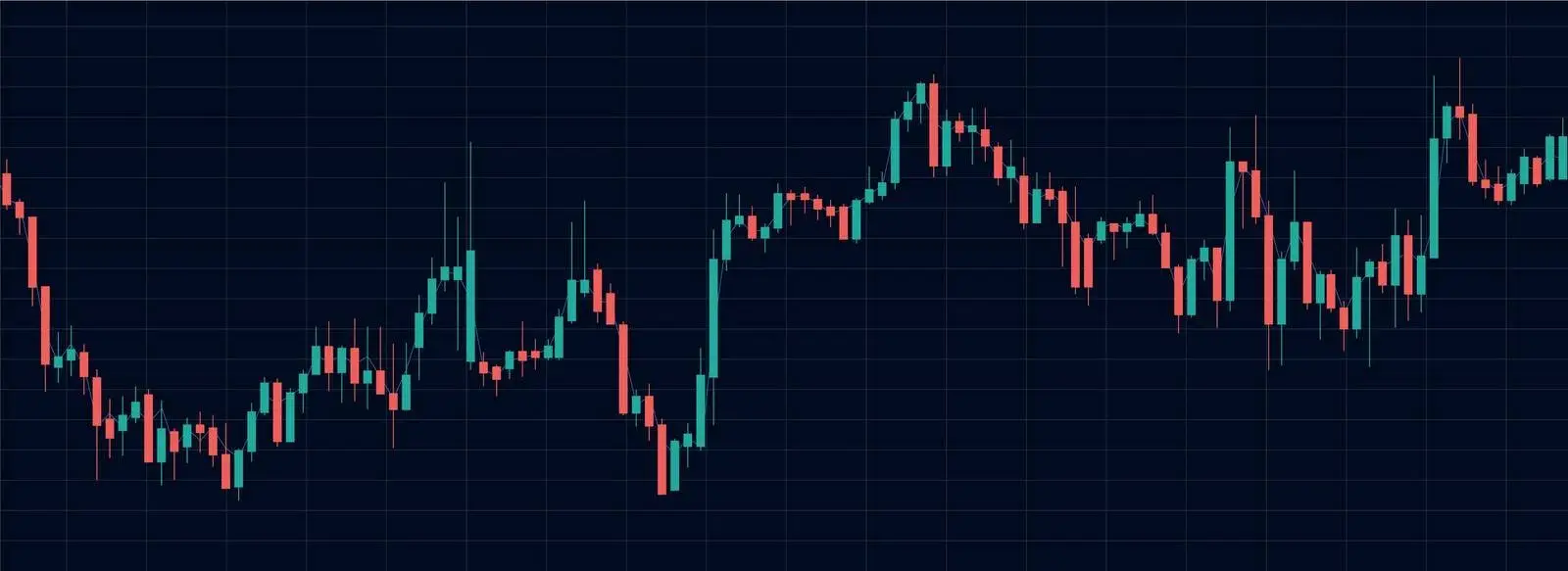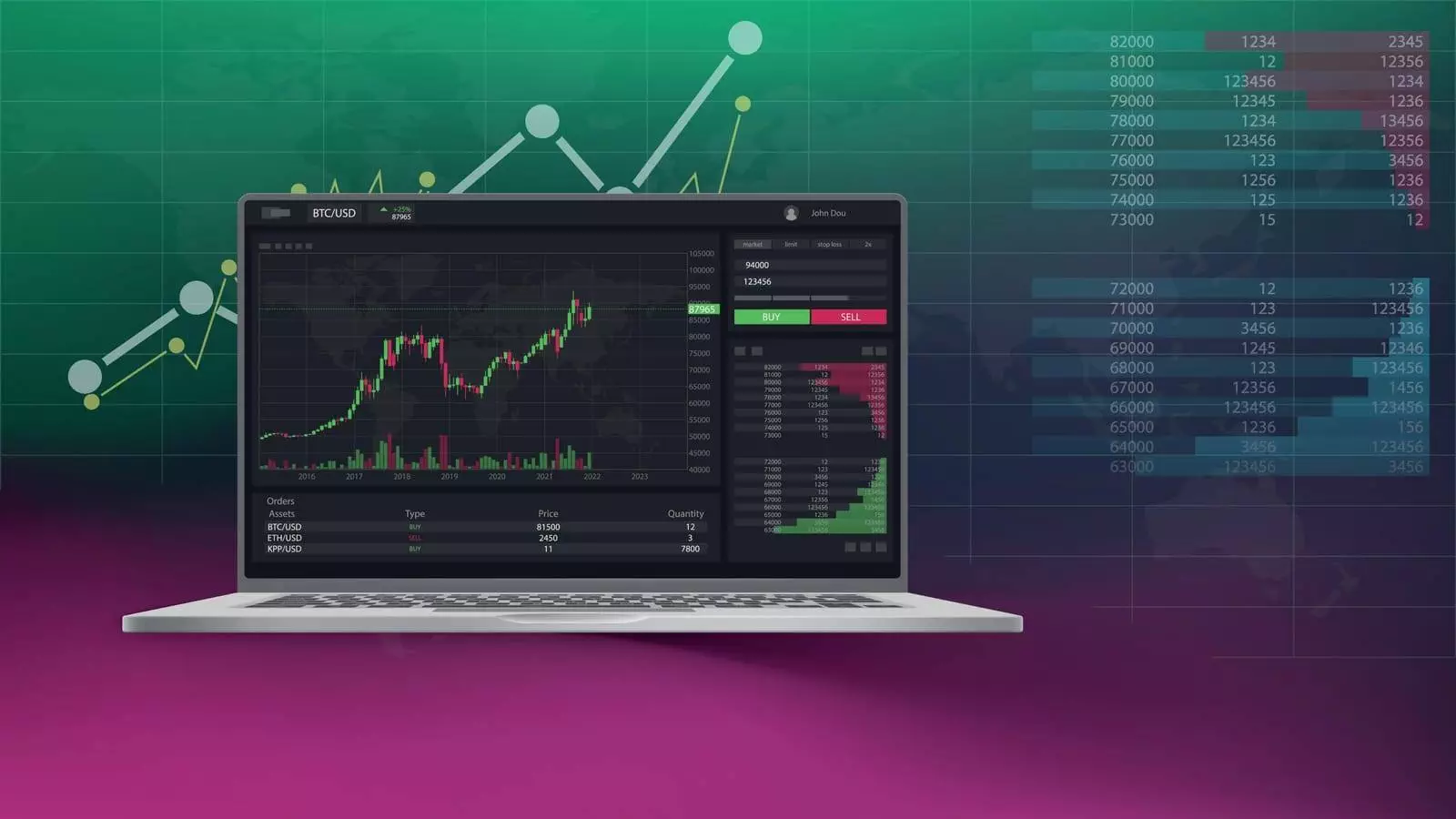Rather like ancient seers peering into their crystal spheres, modern traders strive to forecast fluctuating intraday movements in the stock exchange. Your next significant profit or loss always hinges on this constantly changing strategic activity.
But unlike those ancient fortune-tellers, we’re not left to the whims of fate. With the right tools and knowledge, we can make educated predictions that might turn the tide in our favor.
This article will guide you through the intricate maze of intraday trading, helping you select promising stocks, anticipate market movements, and harness the power of AI for more accurate predictions.
Beyond mere forecasting, we’ll also delve into practical strategies to give you the edge in this high-stakes game.
So, strap in and get ready to navigate the thrilling twists and turns of the stock market.
Key Takeaways
- Selecting the right stocks based on market trends, liquidity, volatility, and price range is crucial for predicting intraday stock movements.
- Implementing AI and machine learning algorithms can enhance real-time data analysis and predictive modeling, leading to more accurate stock price predictions.
- Candlestick patterns and volume analysis can enhance the prediction of intraday stock price movements.
- Developing a disciplined and consistent approach to day trading, mastering risk management, and understanding the true value of stocks are essential for profitable day trading.
The Exciting World of Intraday Trading: What Beginners Must Know

Diving into the dynamic world of intraday trading can seem daunting, but I’m here to help cut through the jargon and break down the key terms and concepts.
We’ll also explore the potential risks and rewards, helping you weigh up the pros and cons of day trading.
Plus, I’ll guide you on knowing the market hours and when to trade for optimal results, so you can navigate this exciting field with confidence.
Cut Through the Jargon: Key Terms and Concepts in Intraday Trading
Let’s break down the complex language of intraday trading, shall we? For instance, you’ve probably heard traders talk about ‘bullish’ and ‘bearish’ markets – in simple terms, a ‘bullish’ market is one that’s on an upswing, while a ‘bearish’ market is in a downturn.
| Term | Definition | Example |
|---|---|---|
| Bullish | Market on upswing | Price movement up |
| Bearish | Market in downturn | Price movement down |
| Moving average | Average of a set of stock prices | Useful in technical analysis |
| Trading volume | Quantity of stocks traded | shows market activity |
With these in mind, we can delve into the risks and rewards of day trading.
Risks and Rewards: Weighing Up the Pros and Cons of Day Trading
When deciding to step into the world of day trading, it’s crucial to assess the potential risks and rewards this investment strategy might bring your way. Weighing up the pros and cons can lead to informed trading strategies.
Here’s a glimpse:
- Risks and rewards can fluctuate immensely
- Day trading requires constant vigilance
- Potential for substantial profits
- High risk of considerable losses
Knowing when to strike is key, so let’s delve into understanding market hours for optimal results.
Knowing the Market Hours: When to Trade for Optimal Results
Understanding the rhythm of the market’s opening and closing bells is like learning a new dance – it can be the difference between stepping on your partner’s toes and gliding smoothly across the floor. Knowing the market hours aids in predicting intraday stock movement, and ultimately, achieving optimal results.
| When to Trade | Market Hours |
|---|---|
| Opening Bell | 9:30 AM EST |
| Midday | 12:00 PM EST |
| Closing Bell | 4:00 PM EST |
| After Hours | 4:00-8:00 PM EST |
Now, let’s explore how selecting the right stocks can influence your trading success.
Choose Wisely: How Selecting the Right Stocks Can Make or Break Your Trading Success

As we dive deeper into the realm of day trading, it’s vital to remember that picking the right stocks is a game-changer.
Recognizing strong and weak stocks through market trends, understanding the importance of liquidity, and assessing the volatility and price range of potential stocks can significantly increase your chances of success.
So, let’s break down these crucial factors and discover how to make the most informed decisions in your trading journey.
Spotting Strong Stocks and Weak Stocks Using Market Trends
Identifying robust stocks and feeble stocks in the market is like separating wheat from chaff, and market trends serve as an indispensable tool in this process. To spot strong stocks and weak stocks using market trends, I focus on price trend and market price.
I observe intraday trends to accurately identify stocks that show potential. Now, let’s dive deeper into understanding why liquidity plays a pivotal role in day trading.
Understanding the Significance of Liquidity in Day Trading
For day trading, it’s vital to recognize the crucial role liquidity plays in facilitating smoother transactions and mitigating potential risks. As an intraday trader, I find liquid stocks on the stock exchange more attractive because of their ease of buying and selling without significant price changes.
| Market Participants | Influence on Liquidity of a Stock |
|---|---|
| Buyers | Increase liquidity |
| Sellers | Decrease liquidity |
With a firm grasp on liquidity, let’s now delve into scrutinizing the volatility and price range of potential stocks.
Scrutinizing the Volatility and Price Range of Potential Stocks
It is fascinating to know that, according to a 2020 study, nearly 60% of daily trading volume is attributed to extreme price volatility. This underscores the importance of scrutinizing the volatility and price range of potential stocks.
Fluctuations in the stock’s price, daily stock price changes, and peaks in trading activity can significantly impact your outcomes.
Now, let’s shift our attention to tactics for anticipating intraday stock movements.
Crystal Ball Eyesight: Tactics to expect Intraday Stock Movements

As we delve deeper into the world of trading, let’s equip ourselves with the tools to predict intraday stock movements.
We’ll thrash out the ongoing debate between fundamentals and technicals, and decide which approach serves short-term trades better.
We’ll also explore the futuristic realm of trend analysis and breakout strategies, and unlock the potential of candlestick patterns and volume analysis in forecasting stock prices.
Fundamentals vs Technicals: Which is Better for Short-term Trades?
Navigating the choppy waters of short-term trading, you’re likely to encounter two predominant schools of thought – Fundamental and Technical analysis. Both can predict intraday stock price movements, but are fundamentals or technicals better for short-term trades?
| Fundamentals | Technicals |
|---|---|
| Deep dive into financials | Focus on price trends |
| Macro-economic factors | chart patterns |
| Long-term perspective | Ideal for intraday trading stocks |
With mastery comes the ability to harness both. Now, let’s delve into trend analysis and breakout strategies.
Step Into the Future with Trend Analysis and Breakout Strategies
Dive headfirst into the thrilling world of trend analysis and breakout strategies, like a surfer catching the perfect wave, to stay ahead in the ever-changing ocean of trading.
- Analyze historical data for stock price prediction.
- Use chart patterns to predict stock market trends.
- Use breakout strategies for predicting stocks’ future price.
- Employ trend analysis to forecast future stock price.
As we ride this wave, let’s shift our focus to unravel the mystery of candlestick patterns and volume analysis in price prediction.
Discovering the Power of Candlestick Patterns and Volume Analysis in Price Prediction
You’re about to unlock the secrets of candlestick patterns and volume analysis, powerful tools that can give you an edge in forecasting price trends.
| Candlestick Patterns | Price Chart | Volume Analysis |
|---|---|---|
| Bullish Engulfing | Shows upward trend | Indicates buying pressure |
| Bearish Engulfing | Displays downward trend | Signals selling pressure |
| Doji | Depicts indecision | May suggest reversal |
| Hammer | Signifies a potential bottom | Reflects high buying volumes |
| Shooting Star | Predicts a top | Demonstrates high selling volumes |
These techniques can turn the tide in price prediction, enhancing your ability to expect price direction. Now, let’s delve into harnessing AI’s potential in accurately predicting stock price fluctuations.
Harnessing AI’s Potential in Accurately Predicting Stock Price Fluctuations

As we delve into the fascinating world of stock predictions, we’ll discover how machine learning is revolutionizing the way we expect price fluctuations.
We’re going to explore how leveraging algorithms can enhance our real-time data analysis and predictive modeling capacities.
Also, we’ll examine some intriguing case studies that highlight the success of AI-based tools in making accurate stock predictions.
An In-depth Look at How Machine Learning Revolutionizes Stock Predictions
Isn’t it fascinating how machine learning is reshaping the way we predict stock movements, revolutionizing traditional methods with extraordinary accuracy?
By predicting the stock prices, we can use machine learning to predict future trends with greater precision than ever before. The predictive power of using machine learning techniques is simply staggering.
Now, let’s delve deeper into how we can leverage algorithms for real-time data analysis and predictive modeling.
Leveraging Algorithms for Real-time Data Analysis and Predictive Modeling
Harnessing the power of algorithms, you can transform your real-time data analysis and predictive modeling capabilities to a whole new level. Leveraging algorithms, predictive modeling helps decode intraday stock movement patterns from price data.
| Real-Time Data Analysis | Predictive Modeling |
|---|---|
| Analyzes current data | Forecasts future trends |
| Detects anomalies | Identifies patterns |
| Drives immediate actions | Enables strategic planning |
| Supports decision-making | Improves accuracy |
With these tools, the next section will reveal some fascinating case studies that highlight successful predictions using AI-based tools.
Case Studies Pointing Out Successful Predictions using AI-based Tools
Dive into the world of case studies, where you’ll see the magic of AI-based tools bringing unbelievable success stories to life.
Consider one where an AI tool accurately predicted the stock market’s closing price, enabling helpful buy and sell decisions.
Another showcased an AI predicting the price of a stock based on the relative strength index.
These are just glimpses of AI’s potential, setting the stage for implementing winning strategies for day traders.
Going Beyond Prediction–Implementing Winning Strategies for Day Traders

As we dive deeper into the complex world of day trading, it’s clear that predicting stock price fluctuations is just the tip of the iceberg.
We’ll be exploring how to develop a disciplined and consistent approach to day trading. We’ll also discuss how to navigate market volatility wisely to preserve capital and master risk management. These strategies go beyond simple prediction and into the realm of successful implementation for consistent profits.
Developing A Disciplined & Consistent Approach To Day Trading
Cultivating a disciplined and consistent approach to day trading isn’t just beneficial, it’s essential for predicting intraday stock movement with accuracy. Online trading, particularly momentum trading, demands a stringent approach to manage intraday positions effectively. The right intraday strategies hinge on developing a disciplined and consistent approach to day trading.
Now, let’s shift our focus to navigating market volatility wisely, a key factor in preserving capital.
Navigating Market Volatility Wisely to Preserve Capital
While a disciplined approach may be your compass in the world of day trading, mastering the art of navigating market volatility is the anchor that prevents your capital from being swept away by financial storms.
Here’s how:
- Analyse price levels meticulously.
- Monitor moving average convergence divergence.
- Understand the true value of the stock.
- Predict intraday stock movement with precision.
Mastering risk management–the keystones of profitable day trading–is the next challenge on this journey.
Mastering Risk Management–The Keystones of Profitable Day Trading
You’ve got to nail down risk management to amp up your profitability in day trading. Mastering risk management is key to predict intraday stock movement accurately.
It’s not just about choosing the right stocks to trade, but also about knowing when to cut your losses. Remember, investment in stocks is a game of strategy and calculations, not a gamble.
Go smart, easy!
Frequently Asked Questions
What are the potential risks involved in intraday stock trading?
Intraday stock trading carries risks such as market volatility, the potential for rapid losses if trades go wrong, the complexity of predicting short-term movements, and the stress of continuous trading decisions.
How much initial investment is typically required for intraday trading?
Diving into the ocean of intraday trading doesn’t require a fortune. Typically, a minimum of $25,000 is needed as per the Financial Industry Regulatory Authority rules. However, your broker may demand more based on market volatility.
How does economic news impact the intraday stock movement?
Economic news significantly impacts the intraday stock movement. If news is positive, it often boosts investor sentiment, driving prices up. Conversely, negative news can drive prices down as investors sell off their holdings.
How can I diversify my portfolio with intraday trading?
To diversify my portfolio with intraday trading, I’ll spread investments across various sectors. It’s about not putting all my eggs in one basket. I’ll also consider different trading strategies to manage risks better.
How much time should I dedicate to intraday trading to see substantial returns?
I practically breathe intraday trading, dedicating upwards of 4-5 hours daily. It’s not a hobby, it’s a full-time job! To see substantial returns, immerse yourself, constantly track, analyze, and respond swiftly to market movements.
Conclusion
In the thrilling world of intraday trading, predicting stock movement is like solving a complex puzzle – daunting yet exhilarating. With the right tools and a keen eye for selecting stocks, I can navigate the labyrinth of the stock market. I have a solid strategy and by harnessing AI, I’m not just predicting the market, I’m one step ahead of it, turning probabilities into profits.
Happy trading, folks!



